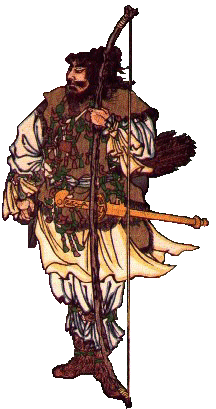
Subdue the Tiger Post Standing
2 days ago











What Is Attachment?
"In order for there to be attachment, you need two things -- the attacher, and the thing to which the attacher is attached. In other words, "attachment" requires self-reference, and it requires seeing the object of attachment as separate from oneself.
The Buddha taught that seeing oneself and everything else this way is a delusion. Further, it is a delusion that is the deepest cause of our unhappiness. It is because we mistakenly see ourselves as separate from everything else that we "attach."
Zen teacher John Daido Loori said,
"[A]ccording to the Buddhist point of view, nonattachment is exactly the opposite of separation. You need two things in order to have attachment: the thing you’re attaching to, and the person who’s attaching. In nonattachment, on the other hand, there’s unity. There’s unity because there’s nothing to attach to. If you have unified with the whole universe, there’s nothing outside of you, so the notion of attachment becomes absurd. Who will attach to what?"(1)

"In order to catch spider monkeys, hunters in South America simply walk through the jungle and drop heavy containers on the ground. These containers have very a narrow top and a wider bottom. Inside the containers the hunters drop a special kind of nut which is particularly attractive to the monkeys. Sometime later, the spider monkeys come down from the tops of the trees, smell the nut, but the tops of the containers are so narrow they have a tight squeeze to get their hands inside. Once they grab the nut at the bottom, their fist is too large to remove if through the opening. And the container is too heavy for them to carry.
So instead of letting go of the nut, the monkeys just sit there until the hunters come back, pick them up, and throw them in a bag. The spider monkeys are not prepared to let go of a small nut in order to gain their freedom." (2)







"In Japan, the oldest written description of the bow appears in Japanese saga called "Kojiki (The Record of Ancient Japan). According to this volume, the bows were the sacred weapon used by the ancient Japanese gods and goddesses, and they were used not only for hunting but also as a symbol of the gods' holiness in many occasions such as religious ceremonies." (1)

"Legend says that Japan's first ruler was Emperor Jimmu, (illustration above) who ascended to the throne in 660 B.C. In paintings and descriptions of his life Jimmu is always depicted holding a long bow, a symbol of his authority." (2)
"From the fourth to the ninth century, China and Japan maintained close contacts and had a great influence on Japanese archer, especially held in the Confucian belief that through a person’s archery their true characters could be determined. A blend of Shinto and Zen Buddhist religions along with the pressing requirements of warriors influenced the existence of archery for over hundreds of years. Bows in the past started to be used for hunting in addition to warfare. Japan then adopted the ceremonial use of a bow from China and continued in Japan even after it ended in China. Kyudo also adopted the composite technique of bow manufacturing by gluing together splinters."(3)
"Modern Kyudo is descended from the Heki school of Kyujutsu, the art of killing by the bow, combined with a branch of ceremonial archery, the Ogasawara school. The branch of Kyujutsu, as all martial arts in Japan, embraced Zen as its spirit--possibly because of its lack of moralizing and its value in training the spirit of a warrior to actually be able to KILL. Ceremonial archery on the other hand emphasized the value of archery as an art form and a Shinto tool (as is evidenced by the usage of the bow at Sumo tournaments, Shinto rites and holidays, when a child is born, and specific events like coming-of-age-day). The sound of the string being plucked is supposed to strike fear in evil spirits' hearts, and the sound of a master-archer shooting is supposed to bring spiritual enlightenment. The combination of both forms is beautiful and appealing to the spirit."

"One is not polishing one's shooting style or technique, but the mind. The dignity of shooting is the important point. This is how Kyudo differs from the common approach to archery. In Kyudo there is no hope. Hope is not the point. The point is that through long and genuine practice your natural dignity as a human being comes out. This natural dignity is already in you, but it is covered up by a lot of obstacles. When they are cleared away, your natural dignity is allowed to shine forth"








